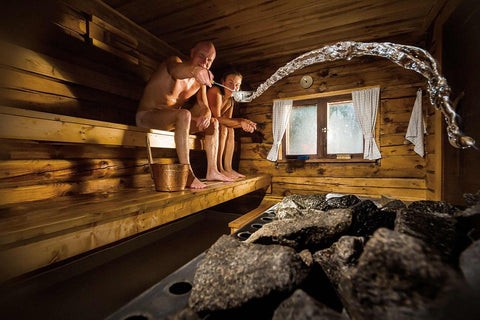A Biased View of Traditional Sauna
A Biased View of Traditional Sauna
Blog Article
How Traditional Sauna can Save You Time, Stress, and Money.
Table of ContentsThe smart Trick of Traditional Sauna That Nobody is DiscussingThe 6-Minute Rule for Traditional SaunaTraditional Sauna Things To Know Before You BuyThe 7-Second Trick For Traditional SaunaWhat Does Traditional Sauna Do?
The majority of the weight lost in a sauna is water loss and is re-gained upon rehydrating. However, undeniably sauna can be a fundamental part of a healthy weight loss program. To check out the distinctions between typical and IR saunas, I will divide these into proven, theoretical, and fabricated distinctions.Thus, the best point in the saunawhich is at the ceiling directly over the sauna heateris generally in between 185 and 190 F. Claims that a conventional sauna surpasses 200 F is simply not true and not appropriate for electric saunas offered in the US. The temperature level for a far-infrared sauna is normally established in between 120 and 140 F; nevertheless, unlike the conventional sauna, the goal in and IR room is not to achieve a high temperature level.

When a typical sauna has been correctly heated, the sauna wall surfaces are warm, the air temperature has accomplished set temperature and the rocks are very heated. As an intriguing side note, the heated wall surfaces and the rocks are producing far-infrared warmth, incorporated with the warmed air, to develop an "covering warm".
Excitement About Traditional Sauna
When the heat is accomplished, the components cycle on and off to keep the high temperature. Most standard sauna users enjoy pouring water over the rocks to create heavy steam to raise sauna humidity levels. The benefits of putting water over the rocks consist of: making the space more comfortable, moistening the nasal flows, and enabling the usage of aromatherapy by blending crucial oils with the water.

When the power gets in the body, it causes the body temperature level to enhance and ultimately results in sweat. In an infrared sauna it is essential for the emitters/heaters to continue to be on nearly frequently. Given that there is no mass of rocks to keep heat, the sauna will cool down if the emitters shut off.
Traditional Sauna for Dummies
As pointed out above, the sauna bather in an infrared space wants to place himself before operating emitters to get maximum take advantage of the warm. The home heating time for both spaces can be extremely different, depending on just how the rooms are used. For a standard sauna, a bather ought to allow 30-40 minutes for the space to attain a preferred temperature level and to appropriately pre-heat the rocks.

A well constructed sauna will typically achieve a temperature find out here now of 150-160 F in regarding 30-40 minutes. For hotter temperature levels, the room may require to warmth for a longer duration.
To some, 15 minutes was "lost" while the infrared energy heated the timber panels rather than heating a body, while others find a pre-heated room to be a lot more comfortable and think a raised beginning temperature is necessary to start perspiring. The length of recommended use for every area is roughly the exact same (10-15 minutes per session); nonetheless, here as a result of the lower air temperatures and the capacity to feel the impacts of infrared warm quicker than a typical sauna, it is not unusual for an individual to spend an overall of 20-30 minutes in an infrared sauna.
Traditional Sauna - The Facts

The average price per kWH of power in the united state is around $0.11, so a 4.5 kW heater will certainly set you back about $.50 to run for one hour, if the heater runs continuously for one hour. Usually a sauna heating system will compete 75% of the initial hour and 50% of succeeding hours on considering that the aspects cycle once the set temperature is achieved.
A 2 person far-infrared area is normally physically smaller than a traditional sauna, usually regarding 4' x 4' or smaller. The IR heater is usually 1.5-1.7 kW using a 120 volt 15 amp plug-in service. Given that the area can be utilized faster than a sauna space, we will certainly think the space is used for to of an hour consisting of warm up time.
There is a rarely talked about difference in the social experience in between the 2 rooms. While our culture has lost a few of the social advantage of the standard sauna experience, it can be extremely socially rewarding (Traditional Sauna). From family members time in the sauna, to heart-felt discussions with significant others, to sauna partiesthe typical sauna experience can lead to intimate socializing
The Definitive Guide to Traditional Sauna
A lot of greater end infrared areas include colored light therapy, audio systems and full-glass fronts.
Report this page